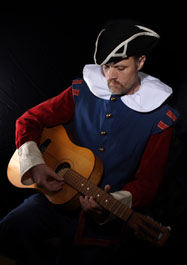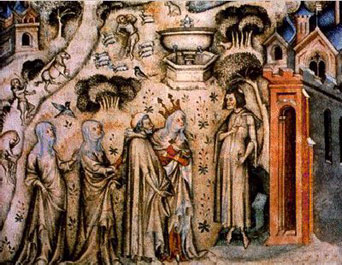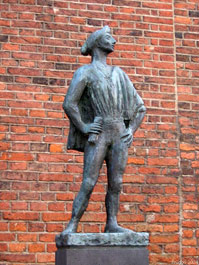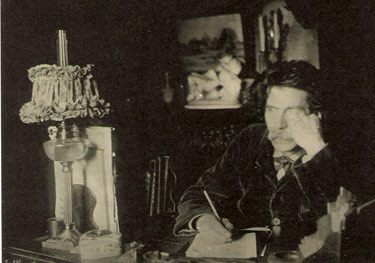

The medieval influence of the blues.
The rondeau’s structure was an early precursor to American blues music, with expatriates like Josephine Baker learning about the form in Paris. Together with the vivelai and the ballade (the ancestor of the ballad), the rondeau is one of the three formes fixe of medieval French poetry. It was also part of the troubadour movement that spread these forms, along with sestinas and cansos (predecessors of canzones and sonnets), throughout Northern Italy, Spain and Southern France.
The modern rondeau’s form is straightforward: 15 lines, eight to ten syllables each, divided into three stanzas – a quintet, a quatrain, and a sestet. The rentrement (or refrain) consists of the first few words or the entire first line of the first stanza, and it recurs as the last line of both the second and third stanzas. Two rhymes guide the rondeau.
From song to the spoken word.
Originally, the rondeau was a courtly musical style devoted to emotional subjects like spiritual worship, romance, and the changing of seasons. Rondeaux were sung and composed in four stanzas by its earliest champions, "hunchback poet" Adam de La Halle and composer Guillaume de Machaut. De Machaut was the world’s premier 14th century composer, but he also wrote 400 known poems that included 235 ballads and 76 rondeaux. Considered the last great poet to also compose, De Machaut’s influence extended across the English Channel and touched Geoffrey Chaucer, among others.
By the late 14th century, poets began to experiment with rondeaux as spoken-word literary vehicles. One, Christine di Pisan, broke from her usual verse about empowering women (Joan of Arc was a reader) to write a few rondeaux. She was also the first to curtail the refrain, simply abbreviating the repeating line for time’s sake:
Vous en pourriez exilher
Un mi'lier
Des amans par vodulzoeil,
Plain d'esreil,
Qui ont fait maint fretillier
Et vellier.
Je m'en sens plusquene sueil
Et m'en dueil, &c.

Composer and poet Guillaume de Machaut was an early champion of the rondeau. (An allegorical scene in which Nature offers Machaut three of her children - Sense, Rhetoric, and Music, French miniature, 14th century)
|

Francois Villon, the first "outlaw poet," turned the rondeau’s abbreviated refrain into an art form. (Statue in Utrecht, Netherlands)
|
Abbreviated and extended.
During the height of the rondeau’s popularity as both a poem and song in the mid-15th century, vagabond poet Francois Villon turned the abbreviated refrain into an art form. The first known outlaw poet, Villon was a highly educated man who harbored extreme bitterness toward the elite and later became a thief before disappearing at age 32.
Meanwhile, copyists (scribes) saw that the partial final line also saved time in replicating poems for distribution; soon, people accepted the truncated second and third stanza end-lines as the poem’s natural structure and forgot about its original intent. That wasn’t the only change to the form. The rondeau simple (12 lines) became obsolete, and the rondeau double (21 lines) was shortened by Eustache Deschamps to 15 lines. Years later, another leading poet, Clement Marot, created the rondeau redouble (24 lines), but it was obsolete by 1520. Deschamps’ 15-line version survived as the form we know today.

An elusive presence.
By 1525, the advent of lyrical poetry and the rise of sonnets and ballads spelled the end of the rondeau’s century-long popularity. It enjoyed a brief reprise later in the century, but fell into obscurity until, two centuries later, Theodore de Banville and the English Romantic poets rediscovered the form and created stronger rhyme schemes in the refrain, assimilating them into their poems. A late-stage Romantic poet, Maurice Rollinat (1846-1903), wrote more than 100 rondeaux. Other practitioners included Paul Lawrence Dunbar, the first celebrated African-American poet, who wrote the noteworthy "We Wear The Mask," and Canadian World War I army physician John McCrae, who in 1915 wrote the most famous rondeau, "In Flanders Fields."

